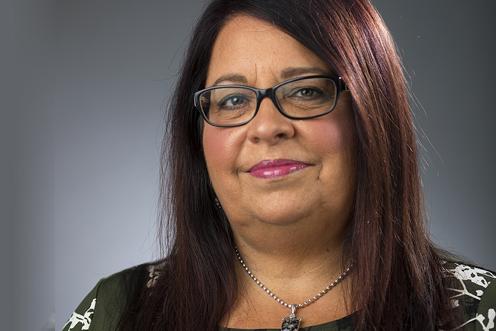Our choice is clear

As nurses, we put the health and well-being of our patients first every time we’re at the bedside. Despite the enormous challenges, we saved the lives of over 73,000 New Yorkers during the COVID-19 surge this spring.
Now we’re facing a different kind of threat to public health—economic austerity. In April, at the height of the pandemic, lawmakers in Albany pushed through $2.5 billion in Medicaid cuts. With deeper cuts now looming, Kenneth Raske, head of Greater New York Hospital Association, warned of layoffs and cuts to critical services at a joint legislative hearing of New York’s response to COVID-19 on August 12.
The economic impact of this pandemic has been staggering, and budget cuts will only exacerbate the situation. More than 3 million New Yorkers have been thrown out of work. By April, nearly 1 in 4 households were reporting they didn’t have enough food to eat. And an estimated 1.5 million people across the state have already lost their employer-provided health insurance, with most falling back on Medicaid.
Federal inaction could cripple economy
Despite this unprecedented economic collapse, Congress has failed to reach agreement on a new COVID stimulus package as the New York Nurse goes to press. Critical benefits, including the weekly $600 unemployment supplement and the federal eviction moratorium, lapsed at the end of July, putting millions of New Yorkers at risk.
Senate Republicans are also standing in the way of major aid to state and local governments, which could mean up to $13 billion in budget cuts across New York state this year, and a staggering $61 billion in cuts over the next four years. Governor Cuomo has warned that an immediate 20 percent across-the-board cut may be necessary if Congress doesn’t come through.
This will decimate vital services across the state, services that have already been cut to the bone over the last two decades. Everything from hospitals and health clinics to summer camps and state parks could be on the chopping block.
City and county budgets are at greatest risk
Albany is warning that $8 billion may be cut from local aid, which will be a double whammy for cities and towns already swimming in red ink. New York City, for example, cut $5 billion from the proposed city budget and still faced a $5 billion shortfall heading into the next fiscal year.
This could mean up to 22,000 layoffs for civil servants across the city. Nurses working in New York City’s Mayoral agencies were warned that layoff notices would start arriving next month. So far, New York City Health + Hospitals has been spared, but if Governor Cuomo implements his across-the-board cuts this could translate into a 10 percent cut to the Health + Hospitals budget.
The picture is no better in other parts of the state. Westchester county, for example, is facing a double-digit budget deficit and has started offering voluntary buyouts for county employees. They are also looking to install 50 red-light cameras across the county, hoping that more traffic tickets might cushion the blow. Erie County is also staring down a deficit of over $100 million, and the Governor’s proposed across-the-board cuts would mean painful cuts for the public hospitals in both regions.
Richest New Yorkers can afford to pay their fair share
Faced with federal inaction, and a population reeling from the effects of the deadly coronavirus, it’s more important than ever that lawmakers in Albany reject austerity and take common sense revenue raising measures to plug our state’s yawning budget gaps. The most obvious place to start is raising taxes on the rich, who’ve seen their fortunes swell during this pandemic.
According to a new report for Americans for Tax Fairness and Health Care for America Now, New York’s 118 billionaires saw their wealth increase by $77 billion, or 14.8 percent, between March and June.
Former New York City Mayor Michael Bloomberg, for example, saw his fortune increase by $12 billion between March 18th and June 17th this year, enough to cover New York’s entire budget shortfall for the coming fiscal year.
This widening gap between the rich and the rest of us is why NYSNA is joining with union and community advocates throughout New York state to demand that the super-rich pay their fair share for New York’s recovery, including raising taxes on people making over $1 million, taxing second homes for the super-rich, closing the carried interest loop hole, and cutting subsides to large-scale real estate developers.
These proposals would not only generate billions in revenue and avoid cuts to vital services, but we could finally start to reverse a generation of skyrocketing income inequality and clear the way for even bolder policies, including the Safe Staffing for Quality Care Act and the New York Health Act. The state’s millionaires and billionaires used to pay a much larger share of the taxes that funded our healthcare, schools, and the services we all need, and they can do it again.
New York is at a crossroads unseen in generations. We can watch as billionaires trample on the lives of millions of New Yorkers, at the cost of untold economic hardship and suffering to working New Yorkers. Or we can reject austerity, and make the super-rich finally pay their fair share so we can rebuild a caring economy that meets the needs of all New Yorkers. As nurses, our choice is clear. NYSNA is going to stand united, and fight back against the cuts threatening our livelihood and the health of our communities.